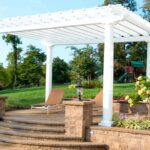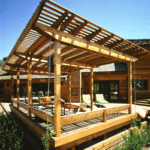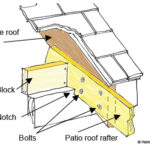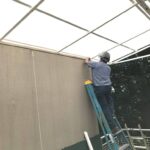Inspiring ideas patio roof ideas, including shade shelters and pergolas, that can transform outdoor areas like decks, patios, and pool areas.
Wood Patio Roof with Spaced Rafters
Wooden Louver Patio Roof
Southwestern Ramadas and Vigas
Metal Pergolas
Interwoven Fabric Shelter
Stretched Fabric Shade Cover
Shade Sails
Bamboo Pergola
Thatched Patio Roof Cover
Trellis Structure
Large Outdoor Umbrella
Polycarbonate Panel Patio Cover
Picture this: a serene and inviting outdoor space where you can relax in the soothing shade, shielded from the sun. A well-designed patio roof or shade structure can transform your backyard into a true oasis, providing both shelter and style in the form of a cozy relaxation nook, an alfresco dining area, or a picturesque spot for entertaining.
In this idea-filled article, you’ll find striking patio roof ideas, including cool designs for pergolas, and shade structures, that are as functional as they are beautiful. It shows you great examples of the various types of patio roofs, pergolas, and shade structures, and discusses some of the various pros and cons of particular materials and designs.
You can buy shade structures and pergolas online or through home improvement centers as do-it-yourself kits, or you can have them professionally designed and built. DIY kits, which come complete with pre-cut materials and detailed instructions, are a quick, cost-effective solution for homeowners. But, on the other hand, professionally designed shade structures come with the expertise and creativity of skilled designers and contractors.
As you’ll see in the examples below, the results can be a high-quality, well-built structures that express individuality and style. Professionals can also offer valuable insights, recommend the best materials, and bring architectural expertise to your project, resulting in a shade structure that is truly at home in your yard.
Wood patio roofs are the classic choice—they bring warmth and natural beauty to an outdoor space. Options like cedar, redwood, or pressure-treated lumber are commonly used for building pergolas. Wood is easy to tool and lends itself to customized designs. Then again, many other materials are popularly used, as you’ll see in the examples below.
One of your first choices will be to decide whether you want your shade shelter attached to the house, or freestanding in the yard. Here’s how these approaches differ:
- Attached pergolas and patio roofs are connected to an exterior wall or your home’s roof. Attached pergolas do a nice job of blending indoor and outdoor living spaces and are often are convenient to access. However, attaching them to the house can be tricky—see Fastening a Patio Roof to Your House.
- Freestanding pergolas can be placed anywhere in your yard. They can be a focal point in your garden, creating a separate and inviting area for relaxation or entertainment. Because they are not attached to a pre-existing support system like a house wall, they depend entirely on their own structural integrity.
Both attached and freestanding structures are built in a wide variety of types and designs. Following are your main options, along with some stunning examples.
Wood Patio Roof with Spaced Rafters
This is a classic in US backyards. This design provides a balance between shade and openness, allowing for a partially shaded area with intermittent sunlight. The the spacing between rafters and their orientation calls for thoughtful design to ensure the right amount of shade and sun. This type of design can be augmented by climbing vines or retractable fabric covers if they don’t provide enough shade.
Wooden Louver Patio Roof
Louvered deck and patio shade structures allow you to customize the amount of sunlight that filters through. Fixed louvers can be built at an angle that provides shade during the hottest parts of the day while allowing for airflow and natural light when you want them. Or you can get adjustable louvers that can change as the need for shade changes.
Southwestern Ramadas and Vigas
These shade structures, popular in Southwestern and Spanish-inspired designs, feature rustic wooden poles and crossbeams. Pine pole vigas, traditionally made from peeled pine logs, and Southwestern ramadas (arbors or porches), typically framed with sturdy timbers, create a rustic and charming atmosphere. The spaced-pole roof design of the ramada shown here allows for partial shade; additional shade elements like fabric can be incorporated, as it is here.
Metal Pergolas
Aluminum or steel pergolas are contemporary, sleek looking, and at the top end of the cost spectrum. They are popular for their strength, durability, resistance to harsh weather, and low maintenance needs. Metal is often powder-coated, both for beauty and to enhance its resistance to rust and corrosion. To provide shade, metal pergolas can be combined with various materials such as fabric, polycarbonate panels, or climbing plants.
Interwoven Fabric Shelter
This stunning patio roof idea combines the natural beauty of wood with the soft look and functionality of fabric. These fabric strips are interlaced between wooden rafters and beams, providing a dappled and diffused shade effect. A similar type of design has fabric strips hanging from cables so they can slide open or closed. For fabric patio roof covers, it’s important to choose durable, UV-resistant fabric to ensure longevity.
Stretched Fabric Shade Cover
Fabric shades can be stretched from corner to corner in a patio roof’s frame or suspended between supports. The result is a colorful cover that offers UV protection, and allows some airflow to help keep the space cool. High-density polyethylene (HDPE) fabric is commonly used for shade covers because it offers excellent UV protection and is resistant to mold and mildew. Fabric requires periodic cleaning (by scrubbing with soap and water) to stay great looking over time.
Shade Sails
Sail-like fabric panels can be stretched between anchor points and poles, creating a very functional and eye-catching shelter. Shade sails can be nearly any shape, size, or color—so customized design possibilities are endless. They are relatively quick and easy to install (if you have the anchor points), and they can be placed strategically to make erecting them easier and to provide shade where needed. Proper tensioning and anchoring is critical to make sure they withstand wind.
Bamboo Pergola
Bamboo shelter has a rustic look but includes plastic panels on the rooftop to shed rain.
Thatched Patio Roof Cover
Thatched roofs add a very tropical, exotic feel to outdoor spaces. These roofs are typically made from natural materials like palm fronds or synthetic thatch. Thatched structures provide excellent shade coverage and a distinctive aesthetic. Before building one of these, however, be sure to investigate the maintenance needs of the material you choose, and do not use any materials that would present a fire hazard. At the very least, the materials should be treated with fire-retardant.
Trellis Structure
Trellises offer a beautiful blend of shade, privacy, and natural greenery. They incorporate lattice or grid-like panels for climbing plants. The result is colorful and lush, and usually provides excellent shade. Trellises can be made of wood, metal, or vinyl.
Large Outdoor Umbrella
Perhaps the most versatile and easily adjustable solution for shade is a large outdoor umbrella. Large umbrellas are sold in a wide variety of sizes, styles, and materials, allowing you to find the perfect fit for your needs. With their sturdy frames and expansive canopies, they provide plenty of shade for outdoor dining areas, poolside lounges, or cozy seating arrangements. Portability is a big plus: You can position them wherever you want shade. Many models have mechanisms for easy opening and closing, and some umbrellas have tilt controls.
Polycarbonate Panel Patio Cover
Polycarbonate, an inexpensive plastic, is a transparent or translucent—it offers UV protection while allowing natural light. These corrugated panels are lightweight, shatter-resistant, and reasonably durable. Polycarbonate panels are available at home improvement centers in various colors and styles, including clear, tinted, or textured. Note that they diffuse sunlight rather than blocking it. In addition, they can scratch or crack over time. For step-by-step advice on building this, see How to Build a Polycarbonate Patio Roof.
NEXT SEE: Building a Roof Over a Deck or Patio



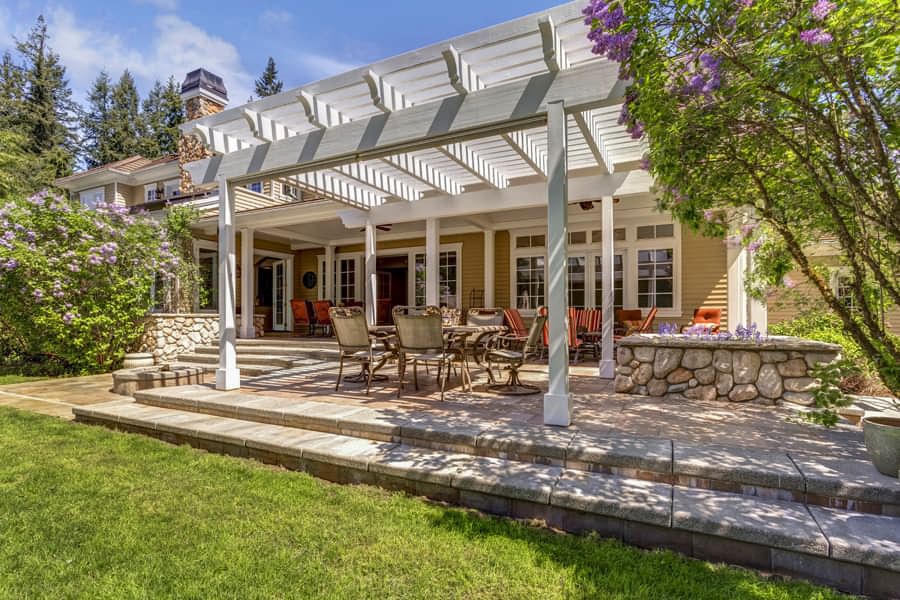
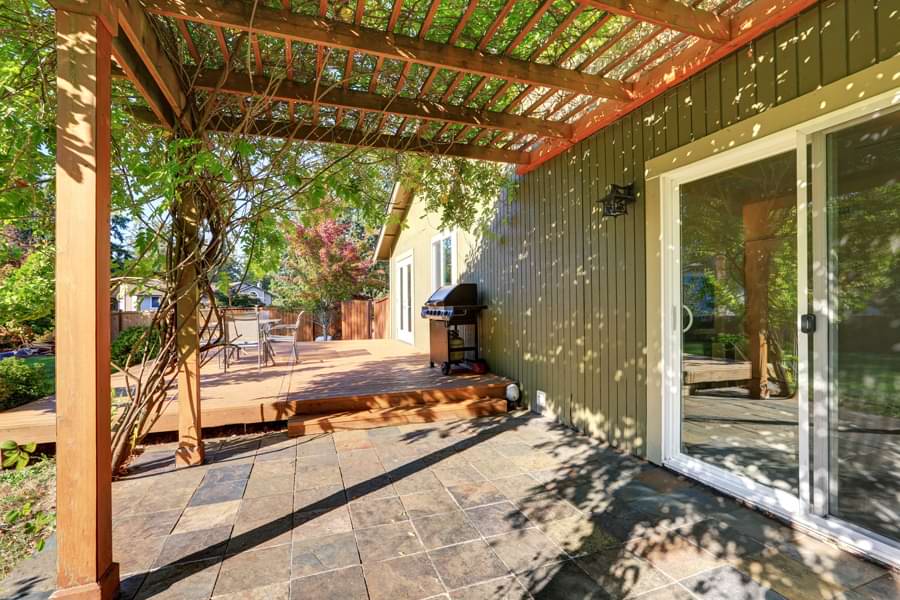
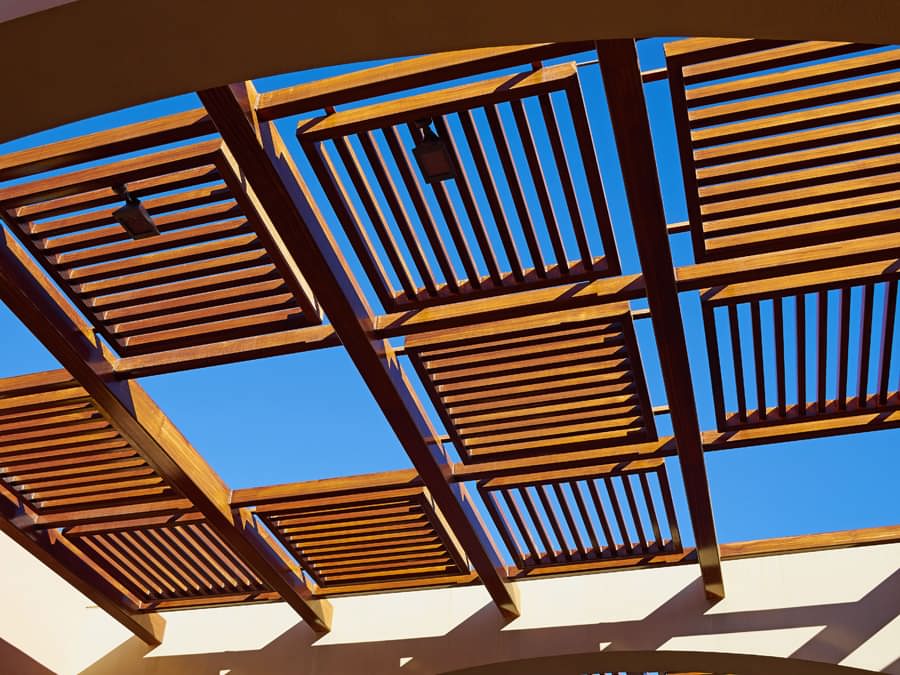
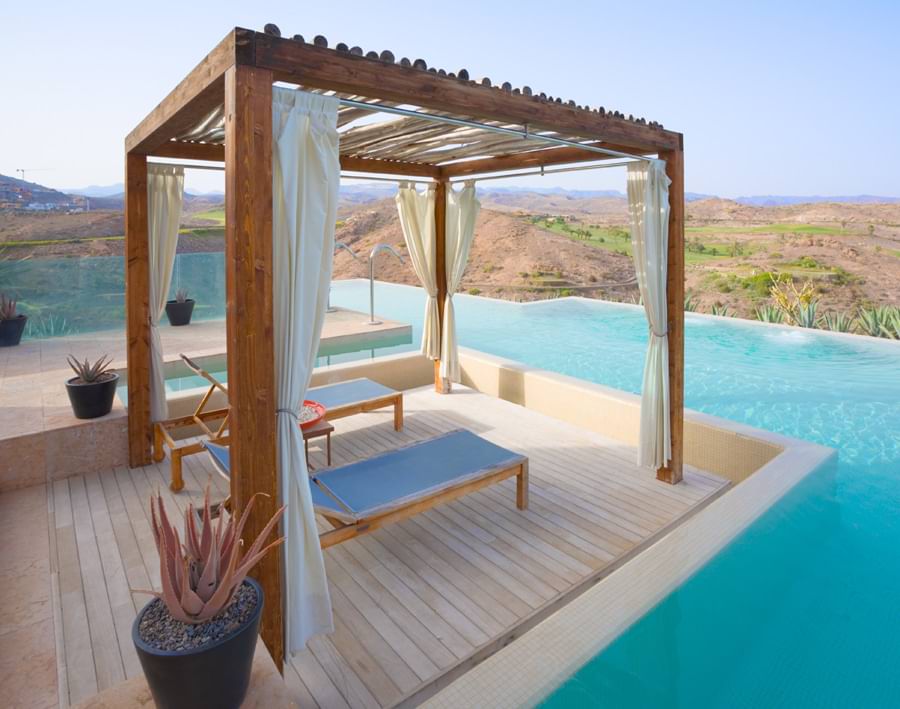
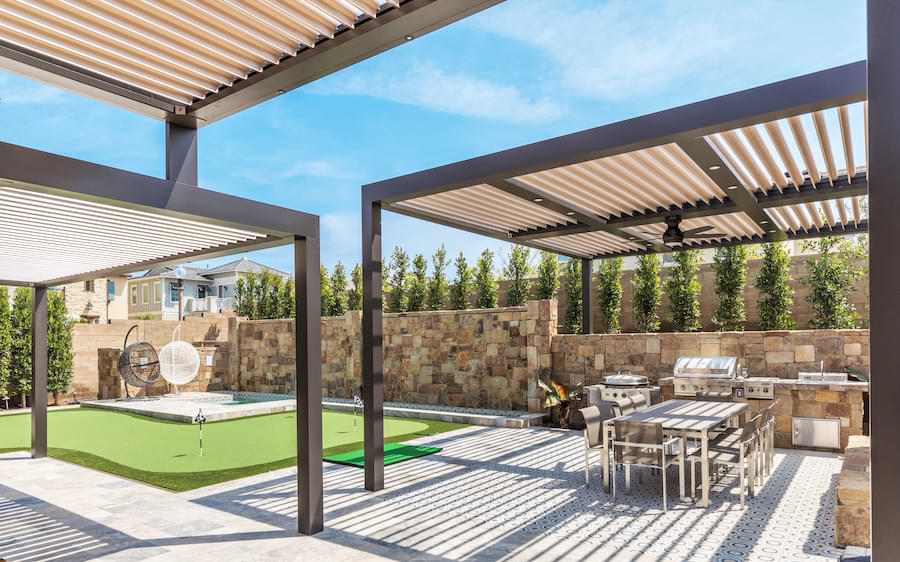
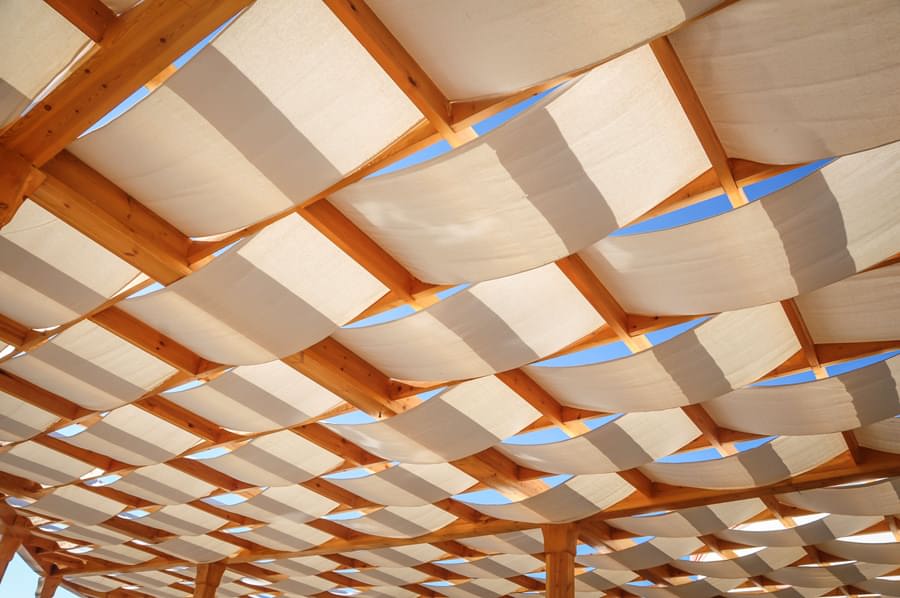
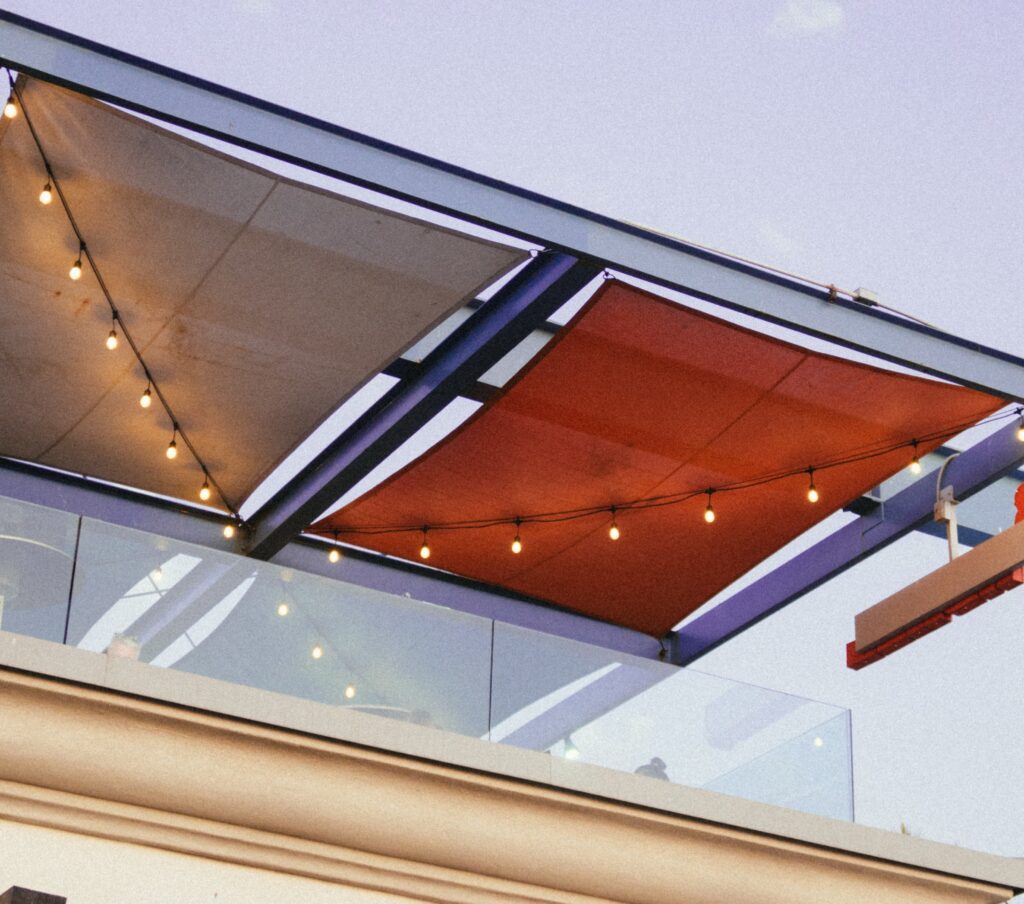
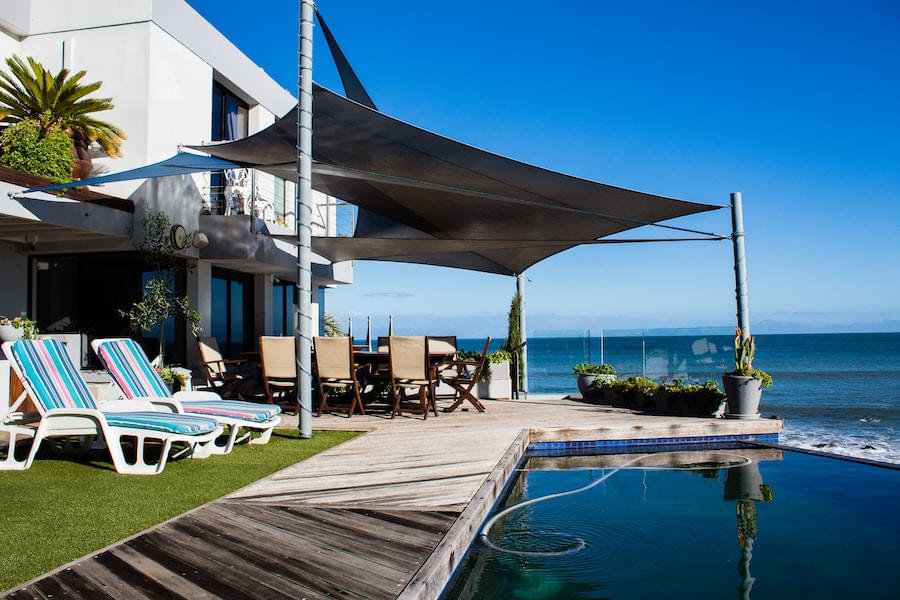
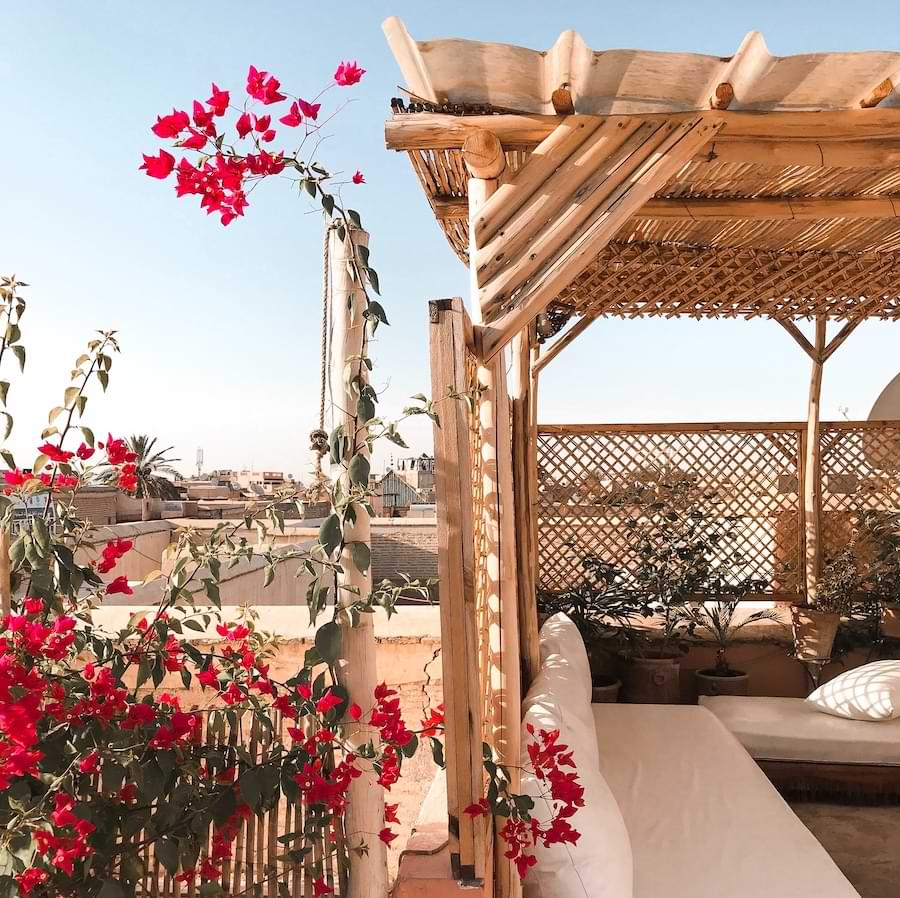
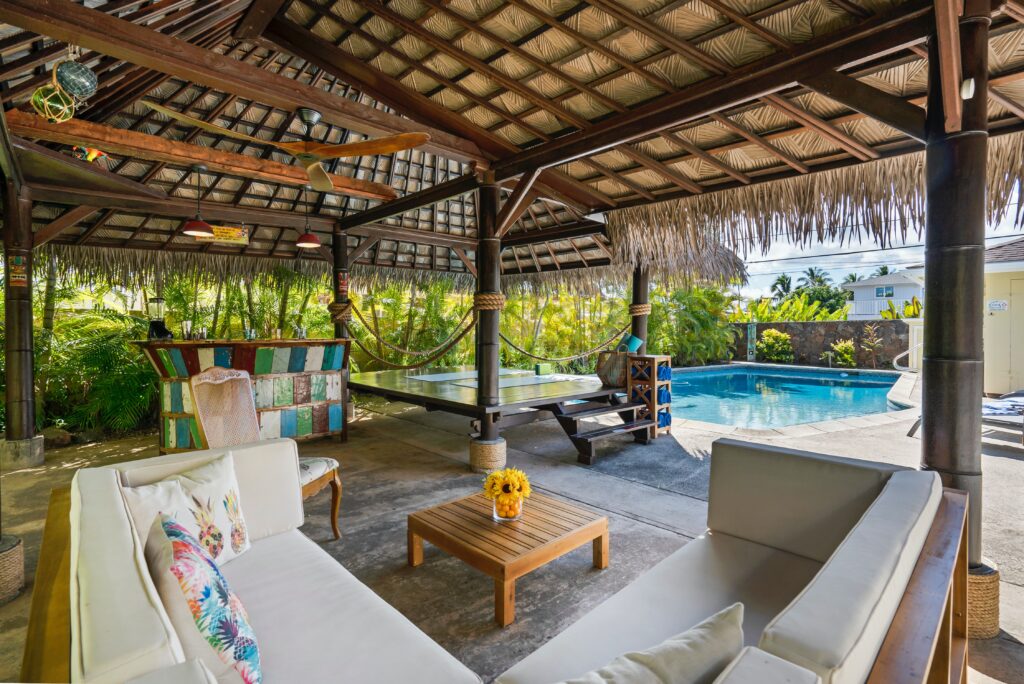
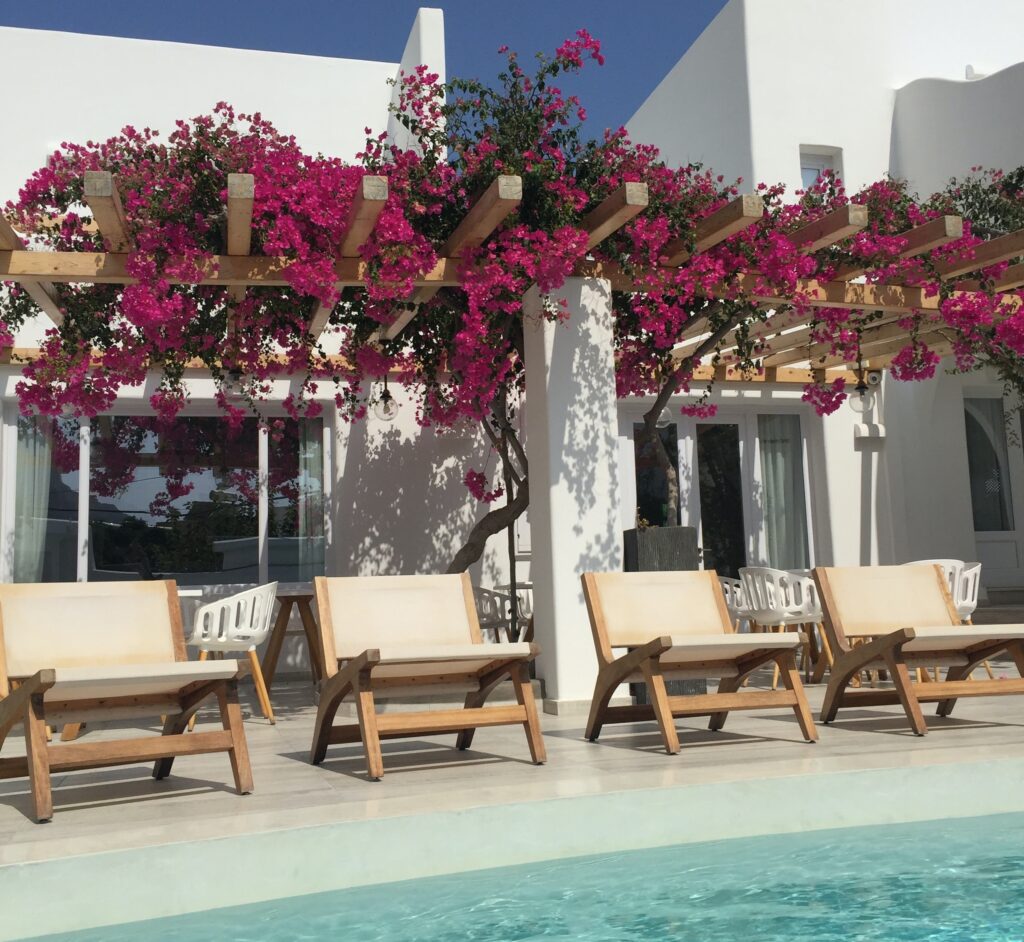
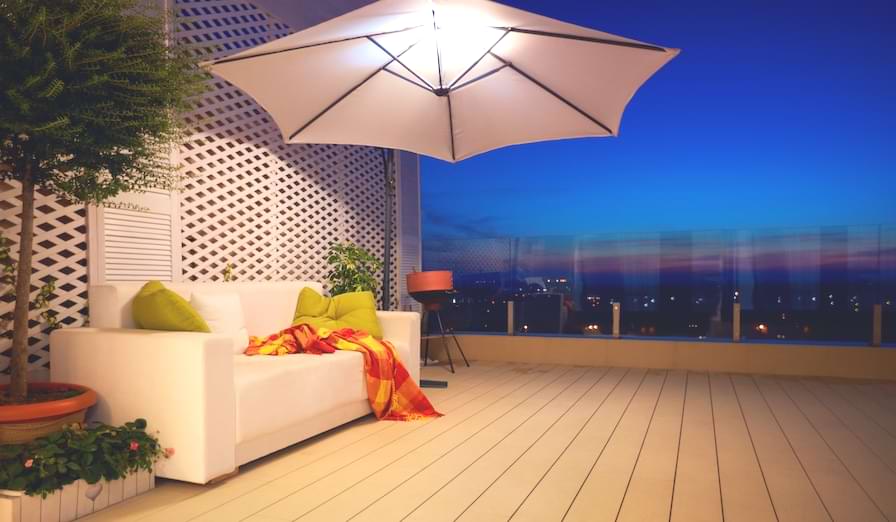
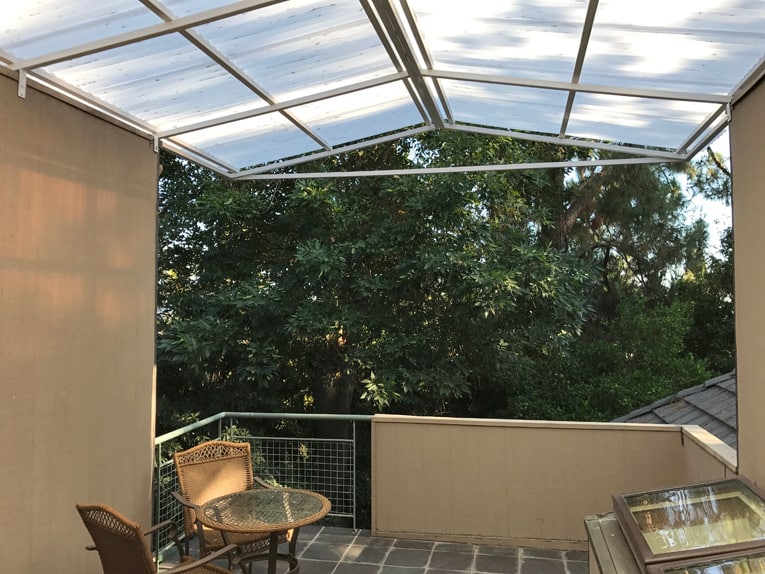
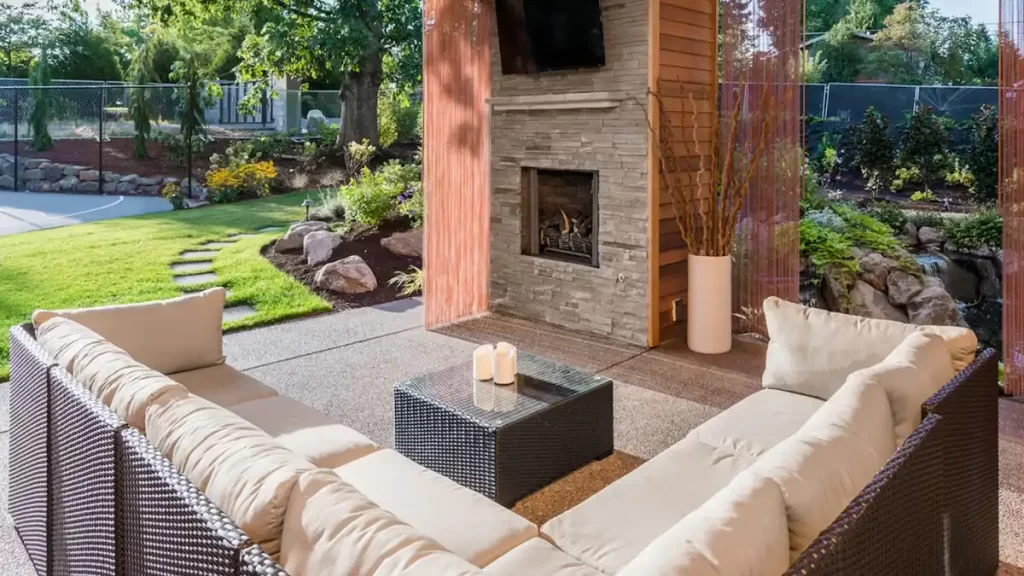
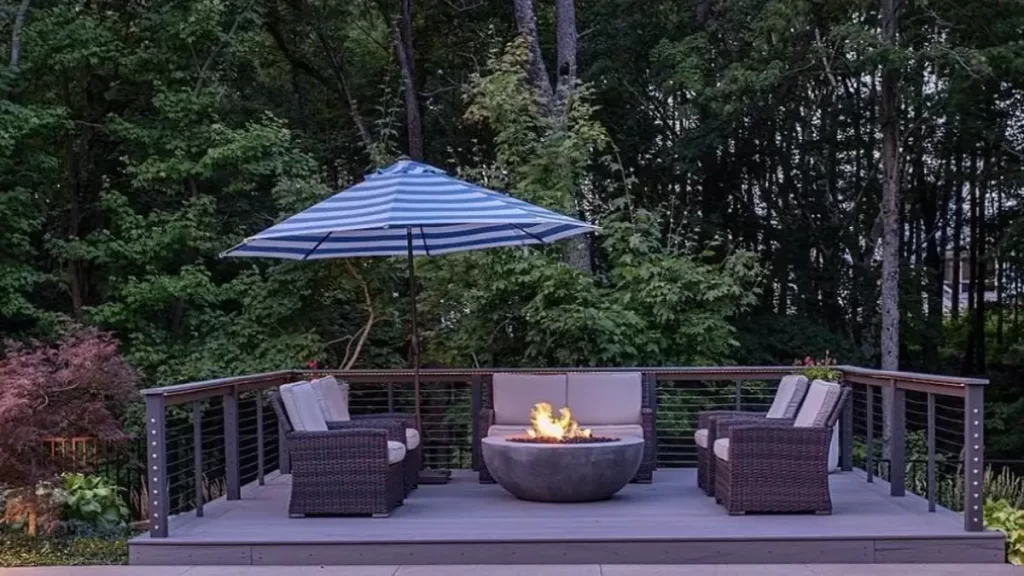
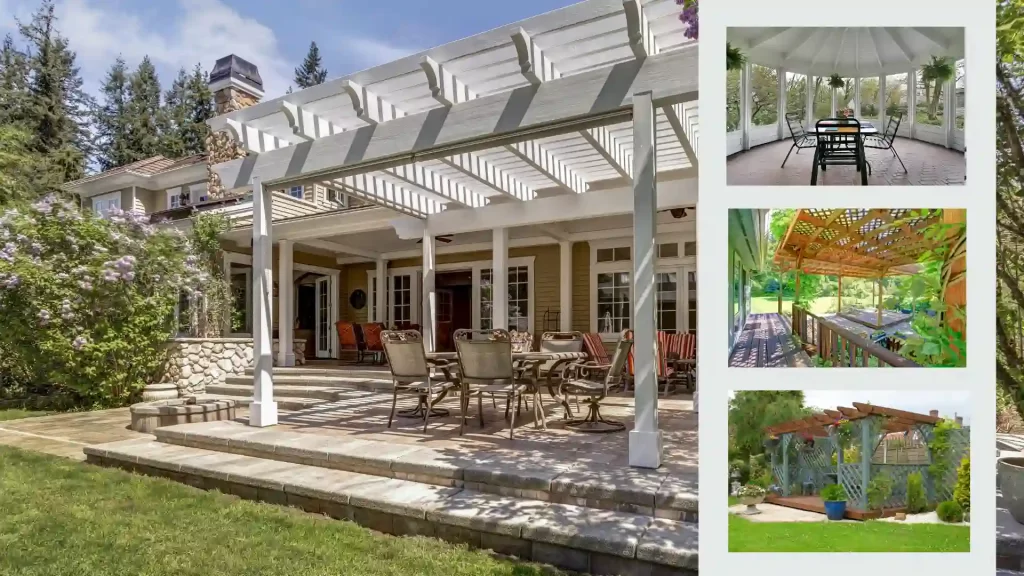
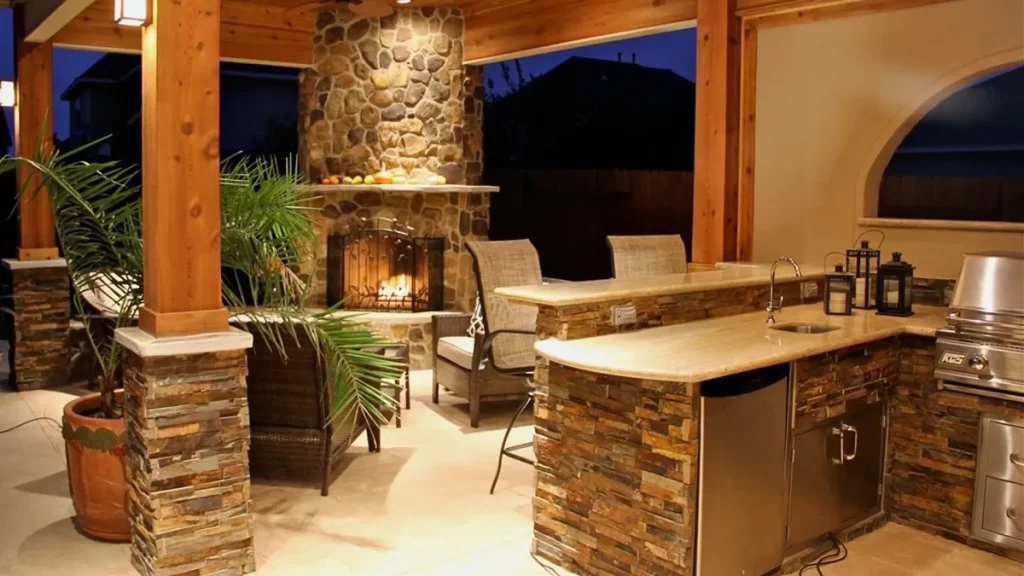
 Don Vandervort writes or edits every article at HomeTips. Don has:
Don Vandervort writes or edits every article at HomeTips. Don has:
